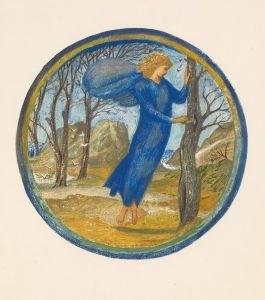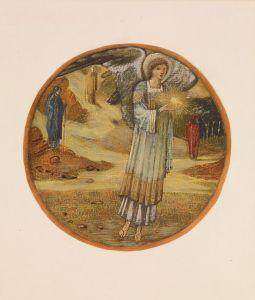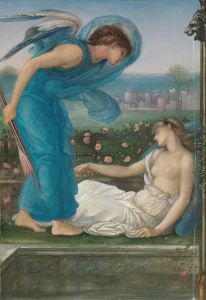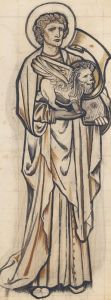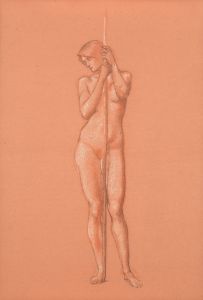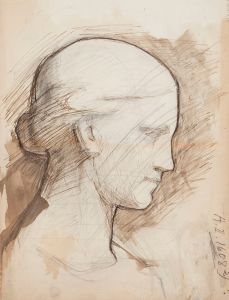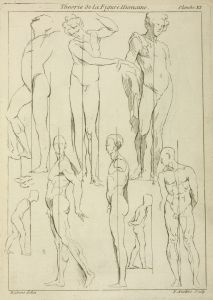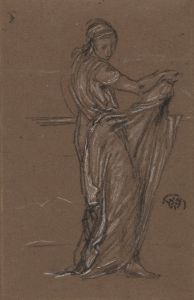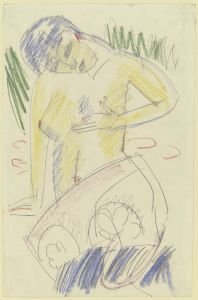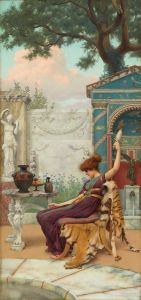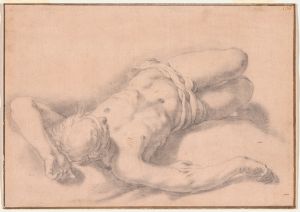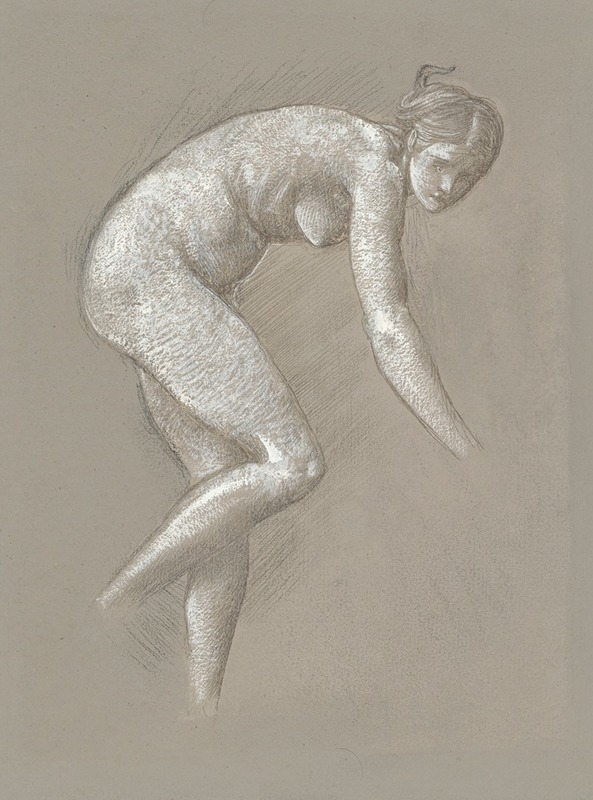
Female nude study
A hand-painted replica of Sir Edward Coley Burne-Jones’s masterpiece Female nude study, meticulously crafted by professional artists to capture the true essence of the original. Each piece is created with museum-quality canvas and rare mineral pigments, carefully painted by experienced artists with delicate brushstrokes and rich, layered colors to perfectly recreate the texture of the original artwork. Unlike machine-printed reproductions, this hand-painted version brings the painting to life, infused with the artist’s emotions and skill in every stroke. Whether for personal collection or home decoration, it instantly elevates the artistic atmosphere of any space.
Sir Edward Coley Burne-Jones was a prominent British artist and designer associated with the later phase of the Pre-Raphaelite movement and the Aesthetic movement. Known for his distinctive style that often depicted medieval and mythical themes, Burne-Jones's work has been celebrated for its beauty, detail, and emotional depth. One of his lesser-known works is the "Female Nude Study," which exemplifies his skill in drawing and his interest in the human form.
The "Female Nude Study" by Burne-Jones is a drawing that showcases his ability to render the human body with grace and sensitivity. Although not as famous as some of his larger paintings or stained glass designs, this study is significant in understanding Burne-Jones's artistic process and his approach to the depiction of the human figure. The drawing likely served as a preparatory study for a larger work, as was common practice among artists of his time. Such studies were essential for artists to explore composition, anatomy, and the play of light and shadow on the body.
Burne-Jones's approach to the nude was influenced by his admiration for the art of the Italian Renaissance, particularly the works of Botticelli and Michelangelo. His nudes often convey a sense of idealized beauty and ethereal quality, reflecting the Pre-Raphaelite interest in medievalism and romanticism. The "Female Nude Study" would have been part of his exploration of these themes, focusing on the elegance and poise of the female form.
The drawing is executed with precision and attention to detail, characteristics that are hallmarks of Burne-Jones's style. His use of line is delicate yet confident, capturing the contours and subtleties of the human body. The study likely employs pencil or chalk, mediums that allow for fine detail and subtle gradations of tone. This choice of medium would have enabled Burne-Jones to experiment with the interplay of light and shadow, enhancing the three-dimensionality of the figure.
While specific details about the "Female Nude Study" such as its date of creation, current location, or the identity of the model are not widely documented, it remains an important piece for understanding Burne-Jones's artistic development. Studies like this one provide insight into his working methods and his dedication to mastering the depiction of the human form.
Burne-Jones's work, including his studies, continues to be celebrated for its contribution to the Pre-Raphaelite movement and its influence on subsequent generations of artists. His ability to blend classical influences with a unique, romantic vision has secured his place as one of the leading figures in 19th-century British art. The "Female Nude Study," though not as widely recognized as some of his other works, is a testament to his skill and artistic vision, offering a glimpse into the meticulous process behind his celebrated paintings and designs.





